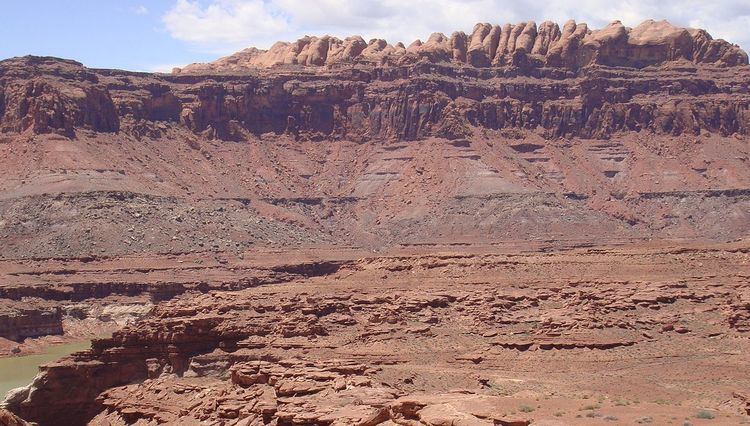 | ||
The Cutler Formation or Cutler Group is a rock unit that is spread across the U.S. states of Arizona, northwest New Mexico, southeast Utah and southwest Colorado. It was laid down in the Early Permian during the Wolfcampian stage. Its subunits, therefore, are variously called formations or members depending on the publication. Members (youngest to oldest):
Contents
Extent
There is no designated type locality for the Cutler. It was named by Cross and Howe in 1905 after Cutler Creek, which enters Uncompahgre River about 4 miles north of Ouray, Colorado. Baker and Reeside revised Cross and Howe's work in 1929 by dividing the formation into the Halgaito Tongue (base), Cedar Mesa Sandstone Member, Organ Rock Tongue, and White Rim Sandstone Member. Cutler's geographic extent was established by Wood and Northrop in 1946. In 1958 Wengerd and Matheny raised the formation to group rank.
Geology
Cutler outcrops are found in these geologic locations in Arizona, Colorado, New Mexico and Utah.
